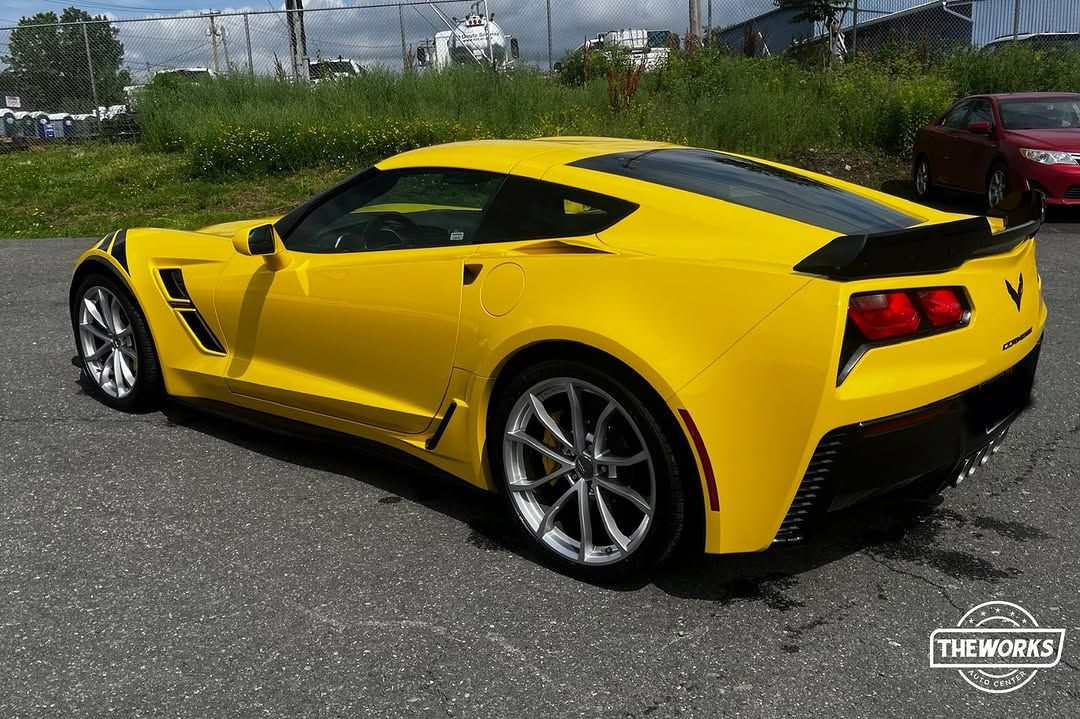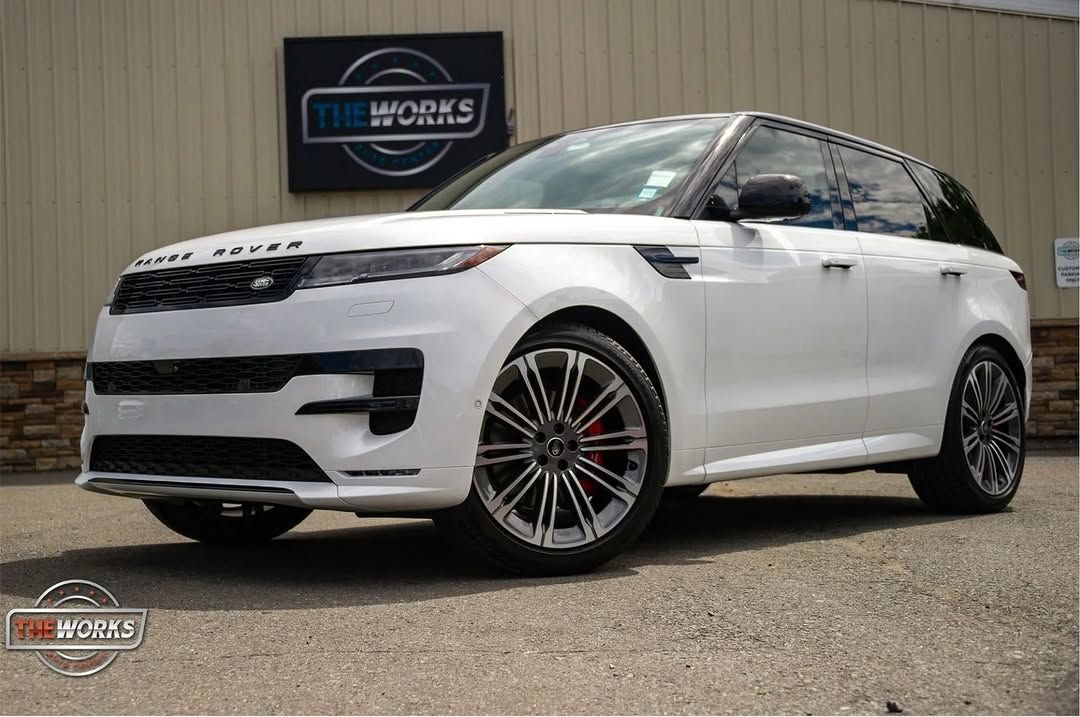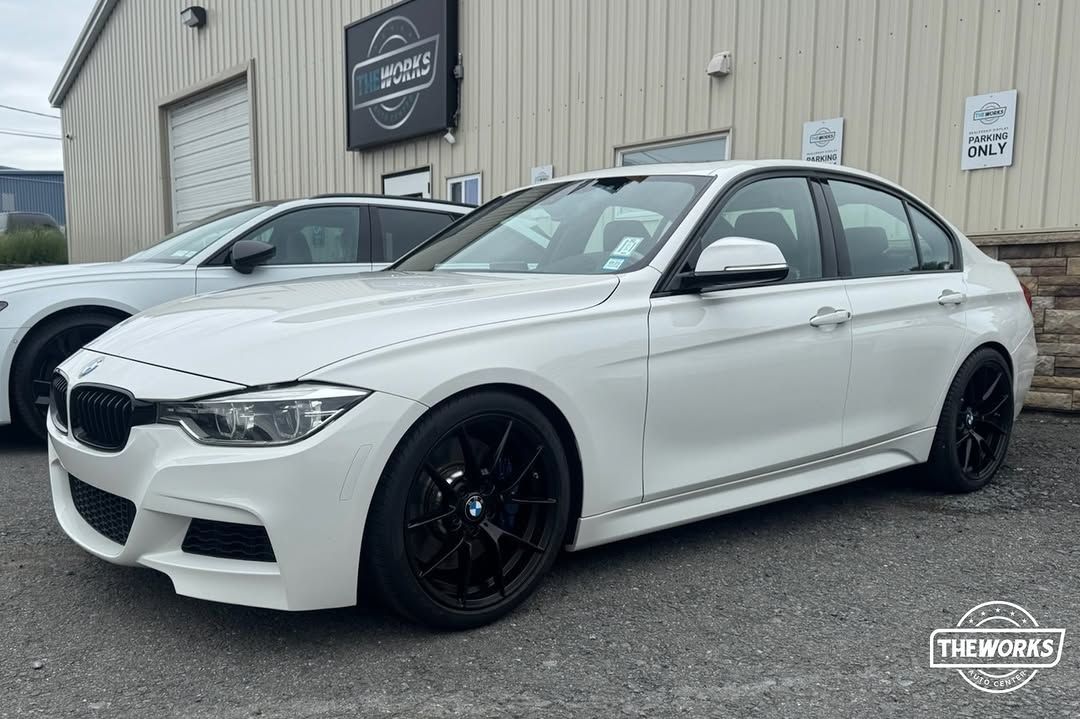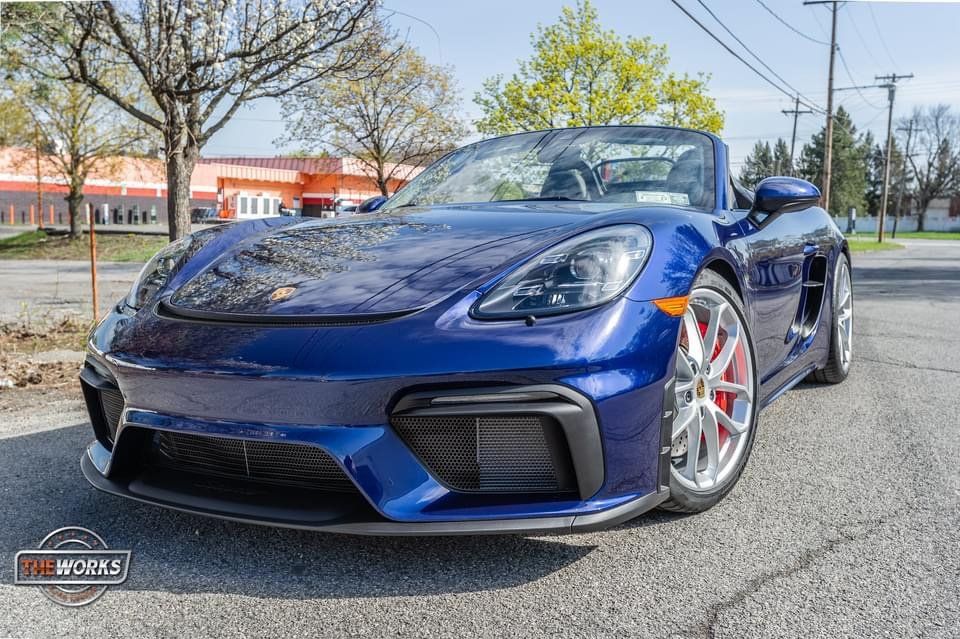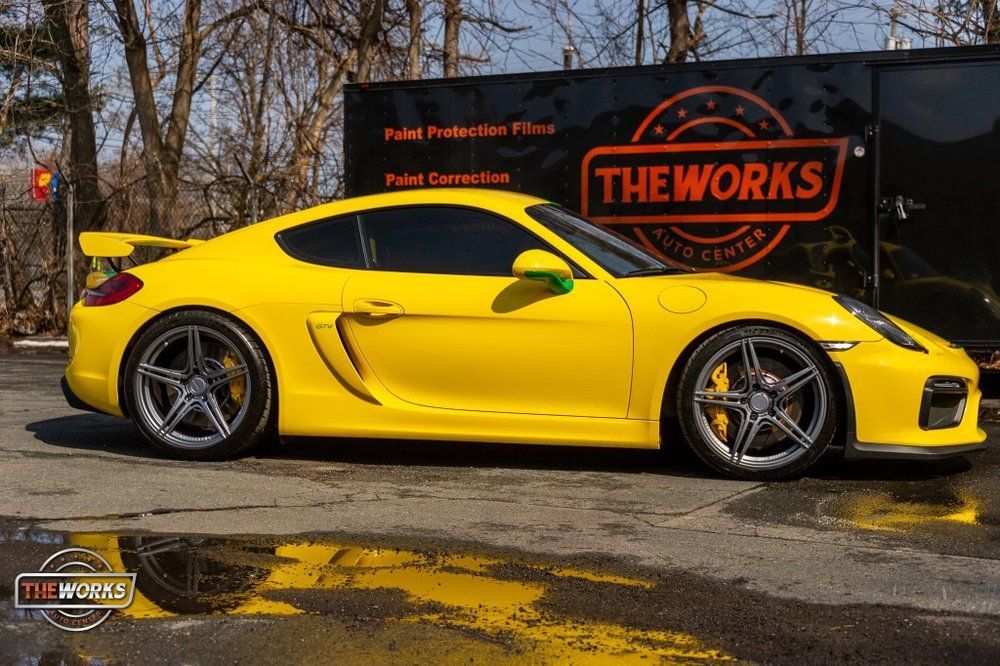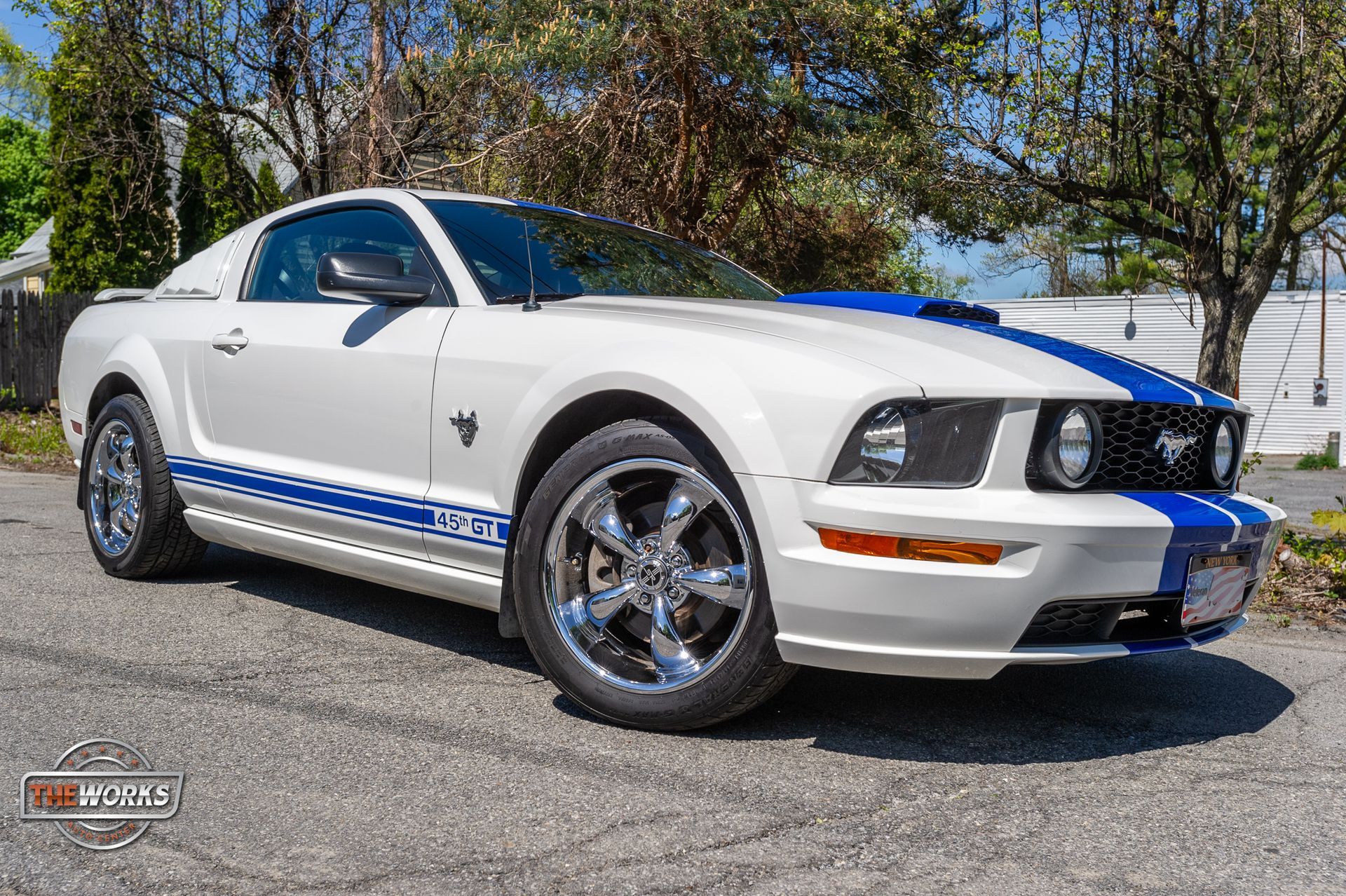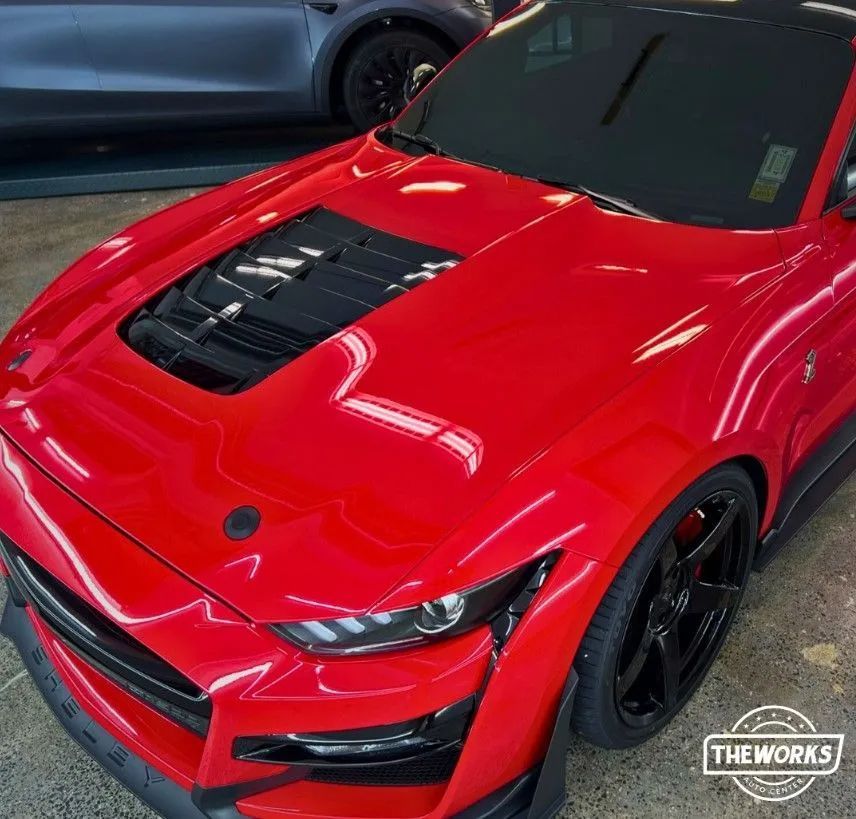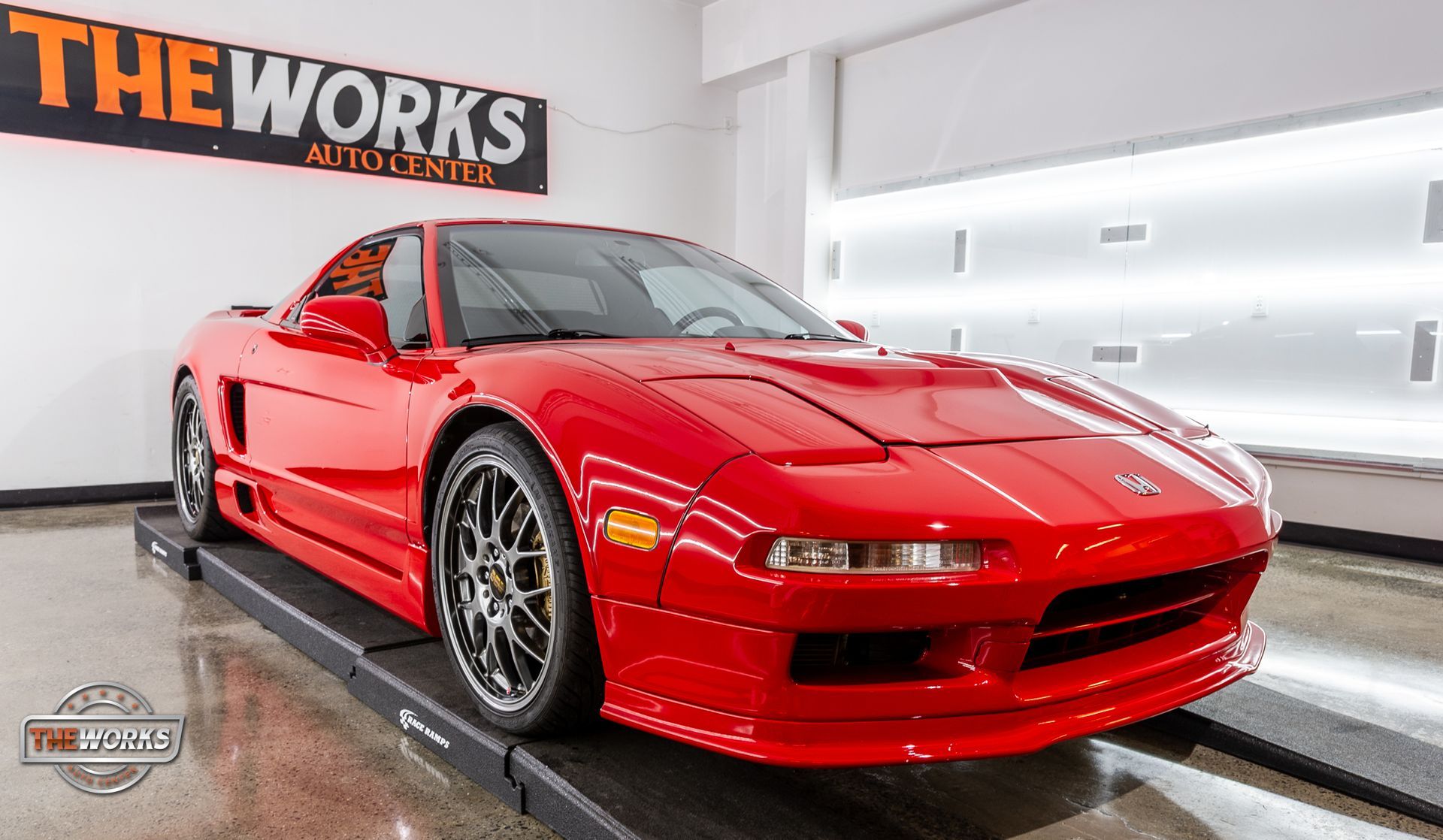Factors to Consider When Choosing Paint Protection Film for Your Vehicle
Choosing a paint protection film (PPF) for your vehicle is crucial for safeguarding its paintwork. This clear, urethane-based film wards off scratches, bug splatters, and minor damages that can harm your car's exterior. Although it might seem all PPF's are the same, they vary in their durability and clarity, aspects you may not have thought about. Therefore, it's about more than just picking any old protection film; you need to know the specifics.
Specifics of Paint Protection Films (PPF)
In simple terms, Paint Protection Films (PPF) act as an invisible barrier against scratches, stone chips, bug splatters, and minor abrasions on your car's paint job.
The transparency of PPF is crucial because it allows the film to shield your car without altering its appearance. PPF manufacturers have made significant strides in ensuring the optical clarity of their films, making them virtually invisible on your car. Additionally, some PPFs now come with self-healing properties, where small scratches or marks on the film can disappear over time when exposed to heat or sunlight. It's like magic, enabled by advanced chemistry!
Durability is another essential characteristic of PPF. These films are designed to be tough and long-lasting, effectively shielding your car from common hazards and preserving its paint for an extended period of time.
Material Composition of PPF
Let's talk about the main materials used in PPF: polyurethane and vinyl-based solutions. People extensively use polyurethane-based films because of their high durability and resistance to yellowing over time. On the other hand, vinyl-based solutions offer unique installation benefits and can be more cost-effective.
Material
Vinyl
- Easier installation
- Cost-effective
- More pliable | Polyurethane | Highly durable
- Excellent resistance to yellowing.
- Optimal protection against minor abrasions
It's always beneficial to speak with a professional or conduct thorough research when considering which material best fits your needs. Understanding these nitty-gritty details about transparent guardians for your vehicle can help you make an informed decision when choosing the right protection for your prized possession.
Types of PPF
When it comes to paint protection films (PPF), they are not a one-size-fits-all solution. Different types of PPF offer varying levels of protection, ease of installation, and other characteristics that cater to different needs and preferences. Here are some common types of paint protection films:
Polyurethane PPF
Polyurethane is a widely-used material in PPF with excellent protective qualities. One of its standout features is its self-healing properties, which mean that minor scratches on the film disappear when heat is applied. Its ability to mitigate small scrapes and abrasions can be especially useful for maintaining the appearance of your vehicle over time.
In addition to its self-healing capabilities, polyurethane (PPF) is highly regarded for its durability. It provides long-term protection against road debris and environmental elements, making it a popular choice for individuals seeking robust coverage for their vehicles. The ability of polyurethane PPF to withstand the wear and tear of daily driving while maintaining its protective qualities sets it apart as a reliable option for those looking for lasting safeguarding.
Vinyl-based PPF
Vinyl-based PPF offers a different set of advantages tailored to specific needs. This type of film is more flexible and easier to install than polyurethane, making it an attractive option for individuals with vehicles featuring complex shapes and contours. The flexibility of vinyl-based PPF allows for a smoother application process, ensuring comprehensive coverage over intricate areas of the vehicle's exterior.
Vinyl-based PPF is known for its malleability, which allows it to seamlessly conform to the curves and edges of various vehicle models, while providing good protection against scratches and small impacts. This makes it the preferred choice when dealing with unique or challenging vehicle designs, ensuring that every part of the surface receives the necessary protection without compromising on coverage.
Understanding the distinct attributes of each type of paint protection film is crucial when making a decision about which product best suits your specific requirements. By weighing the benefits offered by polyurethane and vinyl-based PPF, you can make an informed choice based on your vehicle's design, intended usage, and desired level of protection.
Each type has its own unique qualities that cater to different needs; understanding these distinctions enables you to choose the ideal paint protection film for your vehicle with confidence.
Essential Factors in PPF Selection
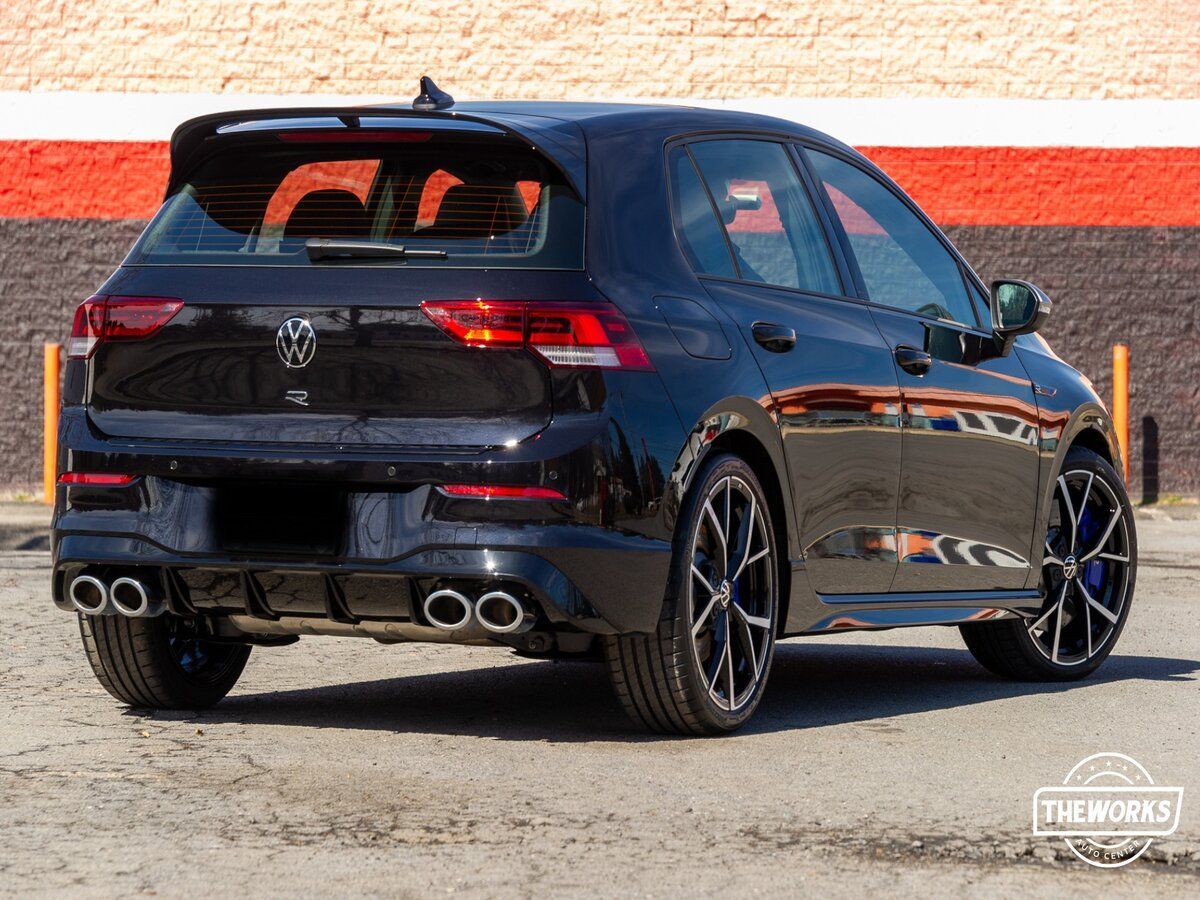
Choosing the right paint protection film (PPF) is crucial for safeguarding your vehicle's appearance and value. Before making a decision, it’s important to take into account several factors to ensure that the PPF meets your specific needs and expectations. Here are some essential factors to consider:
Durability
One of the most critical aspects of selecting a PPF for your vehicle is its durability. The thickness and quality of the film determine its ability to resist damage from road debris, scratches, and environmental elements. Thicker PPF offers better protection against impacts, but it may be less malleable when it comes to conforming to complex curves. On the other hand, thinner films may provide less impact resistance but offer improved flexibility. Consider your daily driving conditions and the level of protection required for your vehicle before choosing the appropriate thickness of PPF.
Cost-Effectiveness
The cost of PPF can vary significantly depending on the brand, type, size, and quality of the film. It is essential to assess the long-term benefits of the PPF in relation to its upfront cost. While higher-quality films with advanced protection features may come at a premium price, they can offer superior durability and longevity, ultimately reducing maintenance expenses and preserving the value of your vehicle over time. Comparing the cost-effectiveness of various PPF options is essential to making an informed decision that aligns with your budget and long-term maintenance goals.
Clarity and gloss retention
The visual appeal of the PPF is an important consideration, especially for car enthusiasts who prioritize the aesthetic appearance of their vehicles. The finish of the film, whether it's glossy or matte, can significantly impact the overall look of the vehicle. Glossy finishes tend to enhance the depth and shine of the vehicle's paint, while matte finishes offer a more subdued and understated appearance. Additionally, evaluating the clarity and gloss retention properties of different PPF types allows you to choose a film that seamlessly integrates with your vehicle's original paint finish without compromising its aesthetics.
Warranty Coverage
When investing in PPF for your vehicle, it's beneficial to consider the warranty coverage offered by leading manufacturers. A comprehensive warranty not only provides peace of mind but also reflects the confidence of the manufacturer in the quality and performance of their product. Compare and analyze warranty terms among different PPF brands, paying attention to coverage duration, conditions, limitations, and user responsibilities. This enables you to select a PPF that offers robust warranty protection against defects, discoloration, yellowing, peeling, and other potential issues that may arise over time.
Installation Difficulty
Another crucial factor to evaluate is the installation difficulty associated with different PPF products. Professional installation services should complement the choice of a high-quality film to achieve optimal results. Some PPF products may require specialized skills and expertise for precise fitting, especially for complex vehicle contours and surfaces.
Consider utilizing certified installers with experience in handling the chosen brand to ensure a successful application without compromising fitment or finish quality.
As you explore these essential factors in PPF selection, remember that thorough research, careful evaluation of options, and consultation with industry professionals can guide you towards making an informed decision that suits your specific needs and preferences.
In navigating through the intricacies of selecting paint protection film (PPF), it becomes essential to gauge the extent of coverage required for preserving your vehicle's pristine condition.
Evaluating protection coverage
It's crucial to evaluate the protection coverage of paint protection film (PPF) by taking into account the areas of your vehicle that are most vulnerable to damage from road debris, scratches, and other hazards. Think of it as creating a shield for your car.
Here are some key areas to focus on when evaluating protection coverage:
- Full Hood: The front of your car is most vulnerable to chips and scratches from rocks and debris kicked up while driving. Full-hood coverage ensures that this area is fully protected.
- Full Fenders: Just like the hood, the fenders can take a beating from road debris. Protecting them with PPF can preserve the overall appearance of your vehicle.
- Side Mirrors: Often overlooked, these high-impact areas are prone to nicks and scratches, particularly in tight parking spaces or narrow streets.
- High-Impact Areas: Consider additional coverage for high-impact areas such as the front bumper and lower rocker panels. These areas can take a lot of abuse and would benefit from extra protection.
The extent of coverage you choose will depend on your individual needs and the level of protection you want for your vehicle. Full coverage provides comprehensive protection but may come with a higher material cost, whereas partial coverage may be more budget-friendly but won't offer the same level of safeguarding.
It's also important to consider the specific conditions in which your vehicle operates. For example, if you frequently drive on gravel roads or in areas with harsh weather conditions, full coverage might be a wise investment to ensure your vehicle remains in pristine condition despite these challenges.
Ultimately, the goal is to find a balance between coverage extent and cost that best suits your preferences as a car owner. When considering this balance, keep in mind that more coverage typically means higher material costs, but it also provides enhanced protection for the entire vehicle.
By carefully evaluating protection coverage, you can make an informed decision about the areas of your vehicle that require PPF, ensuring that your investment delivers long-term benefits while preserving your car's aesthetics and value.
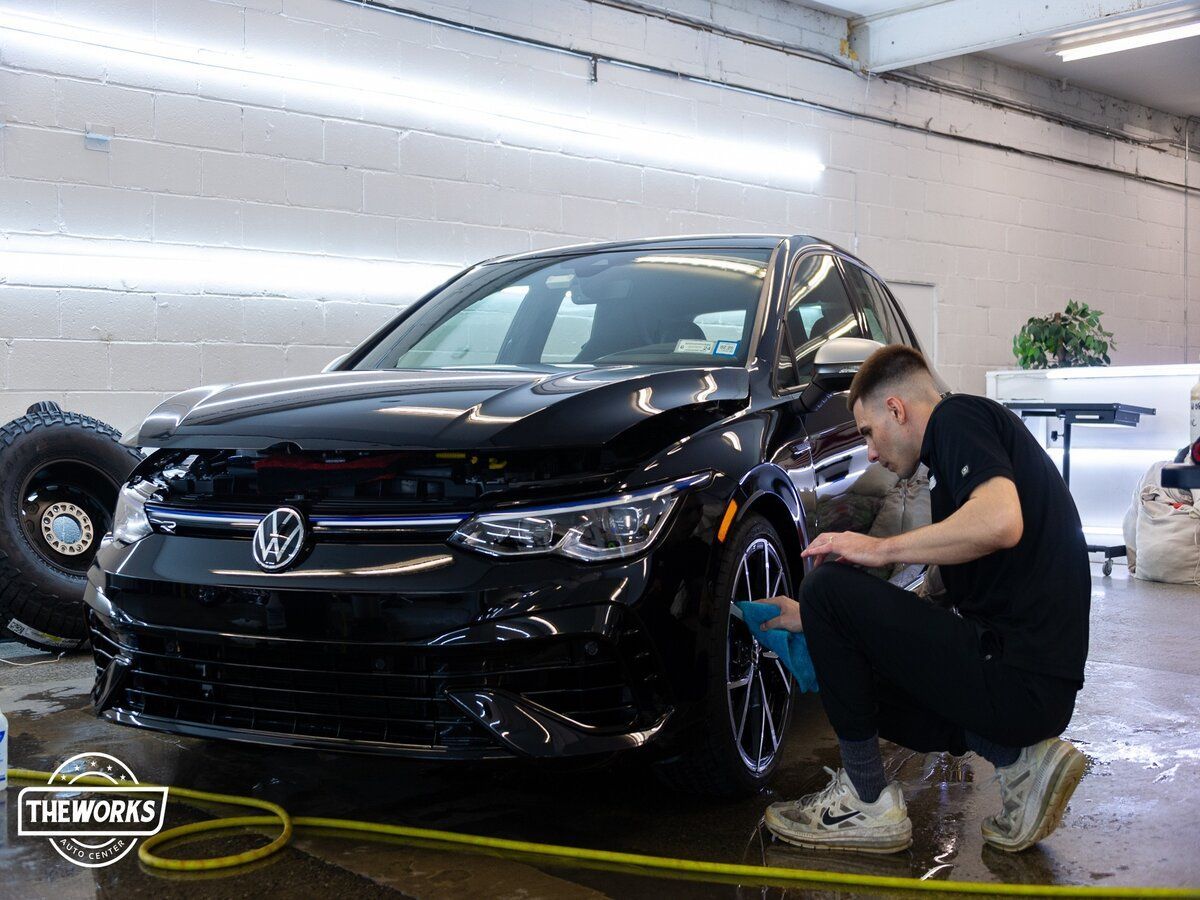
Ensuring Quality Installation
When it comes to the installation of paint protection film (PPF), you want to ensure it’s done right. Even the highest-quality film won't perform as expected if it's not applied properly. The key is finding a certified and trusted installer who can ensure that the film is applied seamlessly without any wrinkles, bubbles, or peeling edges.
Certified installers have the expertise to properly fit the film to your vehicle's contours, ensuring complete coverage and eliminating unattractive seams or misalignments that can affect the appearance and protective properties of the film.
Certification matters. Manufacturers often train their certified installers extensively in proper application techniques. By choosing a certified installer, you can be confident that they have the necessary skills and knowledge to provide a high-quality installation of your chosen PPF brand.
Some benefits of choosing a certified installer include:
- Expertise: Certified installers are experienced professionals who have demonstrated their commitment to quality work.
- Proper Tools: They use specialized equipment and tools designed for precision installation, ensuring a seamless finish.
- Product Warranty: When certified professionals install their PPF products, many manufacturers offer extended warranties, providing you with additional peace of mind.
It's always a good idea to ask about certifications and experience when you're considering an installer for your paint protection film. By ensuring a high-quality installation, you can maximize the effectiveness of your PPF investment in protecting your vehicle's paint.
Pros and cons of using PPF
Paint Protection Film (PPF) offers several benefits, making it an attractive option for many vehicle owners. Let's explore some of the advantages and disadvantages that come with PPF to help you make an informed decision.
Pros of Paint Protection Film
Preserves the vehicle's original paint: PPF's ability to shield the original factory paint from road debris, environmental elements, and minor abrasions is one of its most significant advantages. This means that your car can retain its pristine appearance, potentially saving you money on costly touch-ups and repaints in the future.
Protects against scratches, chips, and UV rays: PPF acts as a shield, guarding the vehicle's exterior from various forms of damage, such as scratches from brushes or keying, chips caused by rocks or other hard objects on the road, as well as harmful UV rays, which can cause paint to fade over time. By providing an additional layer of protection, PPF ensures that your vehicle's surface remains in top condition.
Maintains the vehicle's resale value: As PPF safeguards the vehicle's paint and finish, it can contribute to maintaining its resale value. PPF is a worthwhile investment for those considering selling their vehicle in the future, as well-kept vehicles with minimal signs of wear and tear often attract potential buyers.
Cons of Using Paint Protection Film
Requires professional installation: While PPF offers significant benefits, it necessitates precise installation to be effective. Improperly installed film can lead to air bubbles, visible edges, or even premature peeling, diminishing the overall appeal of the vehicle. Therefore, seeking the services of certified installers with experience in handling PPF is crucial.
Can be costly, especially for full coverage. The cost associated with purchasing and installing PPF varies based on factors such as the size, type, and quality of the film chosen, as well as the extent of coverage required (e.g., full hoods, fenders, and side mirrors). Full coverage options tend to be more expensive due to the increased material needed and extended labor for installation.
May alter the vehicle's aesthetics slightly: Modern PPF products aim to maintain the vehicle's appearance by providing excellent clarity and gloss retention. However, some individuals may notice a subtle difference in reflectivity or texture between the protected and unprotected areas. This alteration is generally minimal but should be considered if aesthetic consistency is a priority.
By weighing these pros and cons alongside your personal preferences and priorities, you’ll be better equipped to determine whether PPF is the right choice for preserving and protecting your vehicle’s exterior.
Certifications and quality assurance for PPFWhen considering the right paint protection film (PPF) for your vehicle, one of the essential factors to consider is whether the product meets stringent industry quality standards and certifications. These certifications offer peace of mind and ensure that the PPF has undergone thorough testing to meet specific criteria related to durability, impact resistance, and optical clarity. Now, let's explore the significance of various certifications and how they influence the effectiveness of PPF.
International Organization for Standardization (ISO)
The ISO certification is a globally recognized standard that sets the criteria for ensuring the quality, safety, and efficiency of products and services. When selecting PPF for your vehicle, it's essential to look for products that meet ISO standards specifically tailored for automotive applications. These standards encompass factors such as material quality, adhesive strength, and UV stability, all of which contribute to the overall performance and longevity of the protective film.
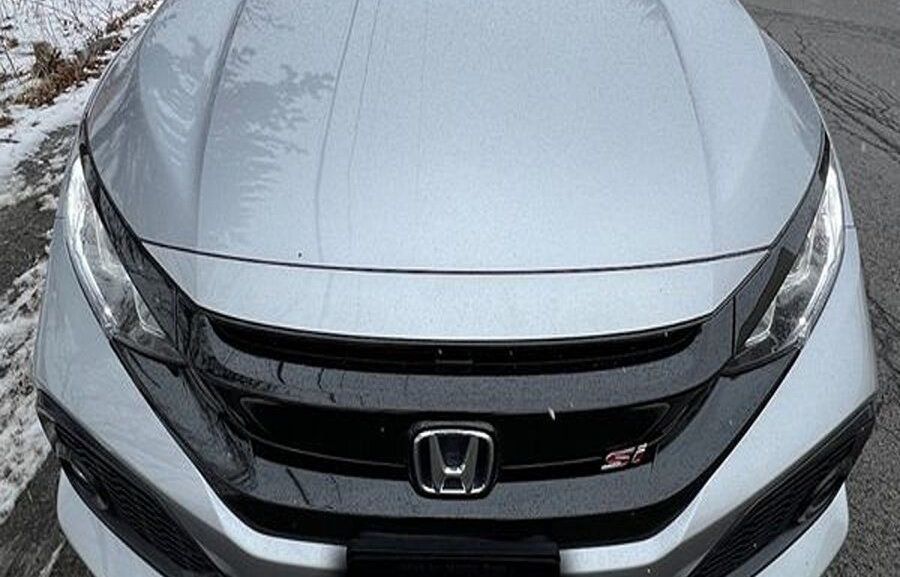
Society of Automotive Engineers (SAE)
Another crucial aspect to consider when evaluating paint protection film is the SAE certification. This certification focuses on establishing specifications for materials used in automotive applications, including PPF. Compliance with SAE standards ensures that the film meets the necessary requirements for withstanding environmental factors, impact resistance, and overall effectiveness in preserving the vehicle's exterior.
The organization is known as the American Society for Testing and Materials (ASTM).
ASTM certification plays a significant role in validating the durability and performance of paint protection film. This certification involves rigorous testing procedures that assess various aspects such as tensile strength, elongation, adhesive properties, and weathering resistance. Paint protection films that carry ASTM certification have demonstrated their ability to withstand harsh conditions while providing long-term protection against chips, scratches, and environmental elements.
Environmental Regulations and Compliance
Apart from product-specific certifications, it's crucial to ensure that the selected PPF complies with environmental regulations such as REACH (Registration, Evaluation,
Authorization, and Restriction of Chemicals). Adhering to these regulations underscores the manufacturer's commitment to chemical safety and environmental impact mitigation, assuring customers of a responsibly produced and eco-friendly paint protection solution.
In essence, prioritizing certifications such as ISO, SAE, ASTM, and environmental compliance when choosing paint protection film for your vehicle ensures a high level of quality assurance and performance reliability. These certifications serve as valuable indicators of a product's ability to deliver superior protection while upholding industry-established benchmarks for durability and safety.
Price Comparisons Among Popular PPF Brands
When in the market for paint protection film (PPF), it's crucial to carefully weigh costs against specific features and benefits. Although it's easy to assume that a higher cost equates to a better product, the reality is more nuanced. Several factors can influence the price variation among different PPF brands, encompassing the size and type of film, the quality, installation complexity, and even geographical location.
To start, consider the size and type of film required for your vehicle, as larger vehicles like SUVs and trucks generally need more material than smaller cars, significantly impacting the overall cost. Additionally, the quality of the film plays a significant role in determining its price—higher-quality films from established brands often come with advanced features and enhanced durability, commanding a higher price point.
Moreover, installation costs can vary depending on the complexity of the vehicle's design and body curves. Vehicles with intricate body designs may require more time and skill for installation, leading to higher labor costs. Brands that offer additional services such as extended warranties, maintenance packages, or customization options may also have higher price points compared to those offering standalone PPF products.
Each brand provides varying levels of coverage, with some offering full-coverage protection and others offering partial coverage. Evaluate whether the additional coverage aligns with your specific needs, as the level of coverage directly influences the price of the PPF.
Geographical location can influence PPF prices due to variations in the cost of living and overhead expenses for businesses. For instance, prices in urban areas are generally higher compared to rural areas due to increased business costs. Therefore, it's advisable to research local pricing trends and compare quotes from reputable installers in your area before making a decision.
As seen, various factors contribute to the pricing variations among popular PPF brands. Understanding these elements will help you make an informed decision based on your vehicle's needs and your budget.
Considered Alternatives to PPF
When it comes to safeguarding your vehicle's paint job, paint protection film (PPF) has long been a trusted choice for many car owners. However, with advancing technology, several other options have emerged, offering various levels of protection and customization. Let's take a closer look at some of these alternatives and what they bring to the table.
Ceramic Coatings
An increasingly popular alternative to PPF is ceramic coatings. These coatings offer enhanced durability, chemical resistance, and a longer lifespan compared to traditional waxing or sealant applications. They create a protective layer that acts as a barrier against environmental contaminants, UV rays, bird droppings, and other forms of damage. Additionally, ceramic coatings provide hydrophobic properties, making it easier to clean and maintain the vehicle's exterior.
It's important to note that while ceramic coatings are highly effective in protecting the paint surface, careful application is crucial for optimal results. We often recommend professional installation to ensure thorough coverage and adherence to the manufacturer's guidelines. While they can be pricier than traditional PPF, their extended durability and lower maintenance requirements may make them a worthwhile investment for long-term paint protection.
Vinyl Wraps
Another viable option to consider is vinyl wrap. These wraps not only offer protection but also provide customization options with a wide range of colors, finishes, and designs. They act as a removable "skin" for your vehicle, offering a layer of defense against scratches, stone chips, and light abrasions. The primary advantage of vinyl wraps lies in their ability to shield the paintwork from external elements while allowing for personalized aesthetics without permanently altering the original paint.
However, it's important to recognize that vinyl wraps may not offer the same level of durability as PPF or ceramic coatings. Professional installation is typically required to achieve a seamless and long-lasting finish. Despite their easy removal without damaging the underlying paint, the decision-making process should consider regular maintenance and potential replacement over time.
Emerging Technologies
Besides traditional paint protection films (PPF), ceramic coatings, and vinyl wraps, new paint protection technologies are constantly being developed. These include self-healing coatings that can fix small scratches on their own, nanotechnology-based products that form molecular bonds with the paint surface to make it stronger, and spray-on solutions that have unique protective properties.
These emerging technologies are continuously evolving and presenting new opportunities for comprehensive paint protection and preservation. As they become more refined and accessible, car owners will have an expanded array of choices to safeguard their vehicles against environmental hazards and wear.
When considering alternatives to PPF, it's essential to evaluate factors such as durability, maintenance requirements, cost, aesthetic preferences, long-term plans for the vehicle, and the need for professional installation. Each option provides distinct benefits tailored to individual needs and priorities. By understanding the diverse range of alternatives available, car owners can make informed decisions regarding the best approach to protecting and preserving their vehicle's paintwork.
Why choose the Works Auto Center?
Are you tired of seeing chips, scratches, and swirls detracting from the beauty of your vehicle's paintwork? Say goodbye to imperfections and hello to automotive brilliance with The Works Auto Center, your trusted expert for paint protection film (PPF) in Albany, New York. With years of experience in the automotive industry, our team of skilled technicians possesses unparalleled expertise in paint protection film installation. We stay abreast of the latest industry advancements to ensure that your vehicle receives the highest standard of care. At The Works Auto Center, we believe in using only the finest quality paint protection film products available on the market. We partner with leading manufacturers to source advanced films that offer superior clarity, durability, and self-healing properties. Book now!


